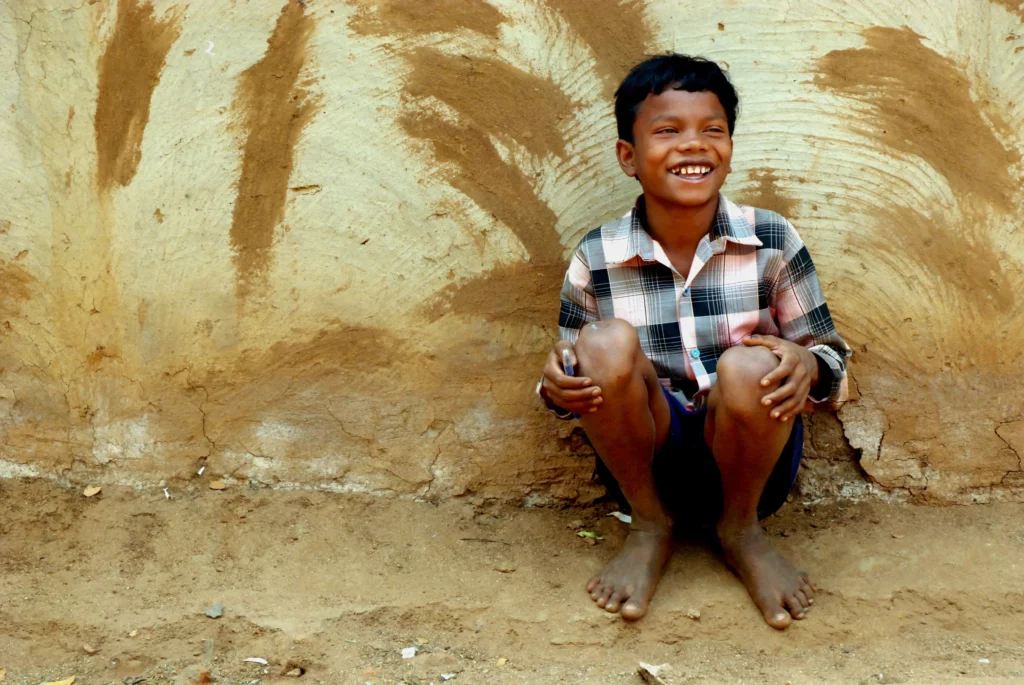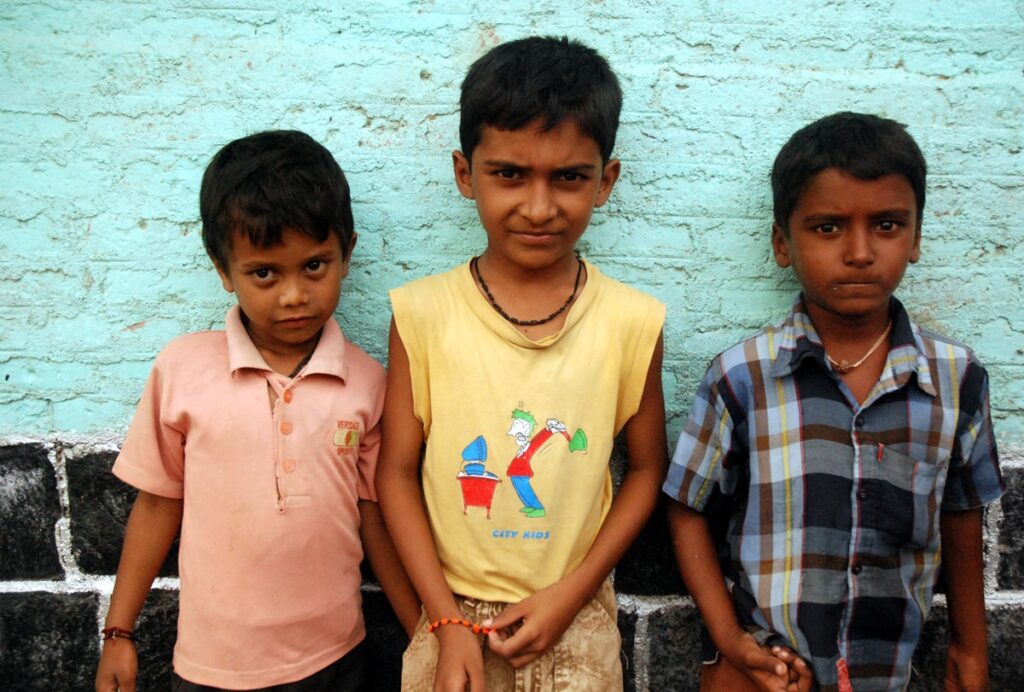
Child Labour Act in India (1986): A Look at the Legislation and Its Evolution
Summary / TL;DRIndia's Child Labour Prohibition and Regulation Act, 1986, aims to protect children from exploitation by banning hazardous work an....
Read MoreThe psychological consequences of child labour are often overlooked, yet they include trauma, anxiety, low self-worth, and social isolation. In India, millions of children face lasting mental health challenges due to forced labour. This harm impacts development and creates generational trauma. CRY India rescues children from such conditions, offering counselling, education, and family support to help them heal and build a brighter future.
Child labour continues to be a global concern, stripping millions of children of their childhood, education, and opportunities for a better future. While the physical toll of child labour is widely recognised, the psychological impact often remains under-discussed.
Child labour deeply affects children's mental health, emotional well-being, and cognitive development, creating long-term consequences not only for the individual but for society as a whole.
Addressing these psychological effects is critical to breaking the cycle of exploitation and creating a brighter future for children in India, where child labour is still prevalent.

Globally, an estimated 160 million children are engaged in child labour (Source: UNICEF, 2021). This staggering figure includes millions of children working under hazardous conditions that jeopardise their physical and mental health.
Many of these children are forced to work due to poverty, lack of access to education, and entrenched social norms that view child labour as a necessity for family survival.
Despite government efforts to eliminate child labour in India, such as the Child Labour (Prohibition and Regulation) Amendment Act of 2016, challenges remain. Marginalised communities are affected more by child labour. This shows the need for targeted actions that tackle the main reasons behind child labour.
The psychological toll of child labour in India is profound and multifaceted. Children engaged in labour often endure excessive stress, emotional trauma, and social isolation, which severely disrupt their mental health. The following are some of the key psychological effects:
Studies show that children involved in labour are at a higher risk of developing mental health issues such as anxiety, depression, and post-traumatic stress disorder (PTSD) (Source: National Library of Science, 2022). These conditions hinder their ability to form healthy relationships, trust others, and envision a better future.
Also Read: Prevent Child Labour
The psychological damage caused by child labour extends beyond childhood, affecting individuals well into adulthood. This causes a chain reaction that affects families and communities for generations. Some of the long-term consequences include:
Intergenerational trauma is a significant consequence of child labour. Children who grow up in harmful environments often feel helpless, scared, and not good enough. These emotions can affect their parenting styles and their ability to provide better opportunities for their children.
Parents who were once child labourers may lack the knowledge or resources to break the cycle, unknowingly passing on the same struggles to their children. Addressing this trauma requires a comprehensive approach that includes education, mental health support, and community interventions.
Child labour slows a child's mental and emotional development in many ways. Prolonged exposure to hazardous working conditions and long hours leaves little room for learning and personal growth. Key impacts include:
Addressing these issues ensures children can lead healthy, productive lives.
To combat the devastating effects of child labour, it is essential to empower children and their families through education, mental health support, and community-based interventions. Key strategies include:
These are the keys to breaking the cycle of child labour. Together, we can create a future where every child has the opportunity to thrive.
Also Read: Causes of Child Labour
Education is a strong way to break the cycle of child labour and reduce its mental effects. Schools provide a safe and nurturing environment where children can heal from past trauma, build confidence, and acquire the skills needed for a better future.
Government initiatives such as the Right to Education (RTE) Act, 2009, aim to ensure that children aged 6 to 14 can access free and compulsory education. However, gaps in implementation often leave many children from marginalised communities without access to quality education.
Organisations like CRY India address these issues through initiatives such as learning centres, providing educational resources, and offering remedial support to help bridge the learning gaps of these children.
Preventing child labour requires a multi-pronged approach that addresses its root causes. Key interventions include:
CRY India has been a leader in efforts to combat child labour in India and its psychological impact. Our integrated approach focuses on:
CRY supported over 9,465 children, helping them escape labour and continue their education. These efforts underscore the transformative power of collective action in addressing the psychological and social impact of child labour.
Highlighting success stories of children who have overcome the odds and rebuilt their lives is a powerful tool for inspiring change. Children rescued by CRY have gone on to complete their education, pursue meaningful careers, and give back to their communities.
For instance, Pragnya, a 16-year-old girl from Karnataka, was forced into child labour after her father's death. However, with the support of CRY's project partners, Pragnya was re-enrolled in school, and her mother received an MNREGA job card, allowing her to earn enough to support the family without working in the fields or needing Pragnya's help.
Today, Pragnya excels in her studies and inspires others in her community to prioritise education. Stories like hers demonstrate that with the right support, every child has the potential to thrive.
Community involvement is crucial in addressing the root causes of child labour. By promoting a culture that values education and child rights, communities can play a pivotal role in preventing exploitation.
Community-based programs that offer support to families and raise awareness about the psychological effects of child labour can lead to sustainable change.
The psychological consequences of child labour is far-reaching, affecting not just individual children but entire communities. Addressing these impacts requires a comprehensive approach prioritising education, mental health support, and family empowerment.
Organisations like CRY India have demonstrated that change is possible but requires a collective effort from governments, communities, and individuals. By working together, we can break the cycle of exploitation and create a brighter, healthier future for every child.
Child labour survivors often struggle with anxiety, depression, low self-esteem, and post-traumatic stress. Many also face difficulties with trust and forming relationships. These psychological challenges can persist into adulthood without timely support, care, and rehabilitation.
Emotional abuse damages a child’s sense of safety and self-worth. For working children, who are already vulnerable, constant neglect or humiliation worsens stress and trauma. This can hinder their emotional growth and make recovery much harder even after rescue.
Effective recovery requires safe shelter, counselling, education, and community reintegration. Access to therapy, supportive caregivers, and consistent schooling helps children rebuild trust and confidence. NGOs and child protection groups play a vital role in offering these long-term support systems.
The long-term effects of child labour include chronic stress, difficulty managing emotions, and a higher risk of mental health disorders in adulthood. Many survivors carry feelings of fear, insecurity, or worthlessness, underscoring the urgent need for early intervention and care.